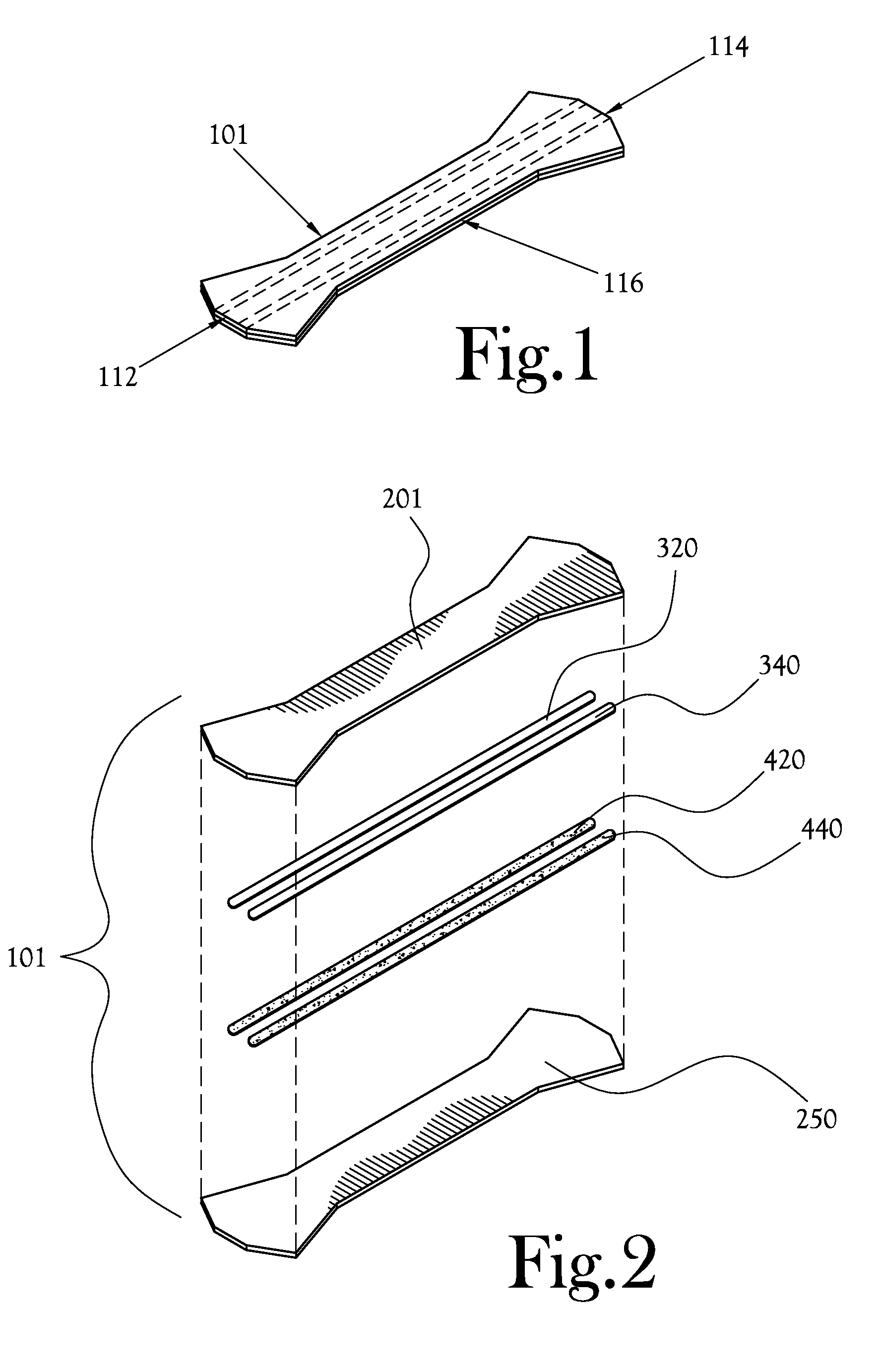Reinforced Suture Strip and Methods of Use
a technology of reinforced suture and suture strip, which is applied in the field of reinforced suture strip and methods of use, can solve the problems of increased risk of infection in open wounds, increased likelihood of substantial scar tissue and later visible scarring, and increased scarring degree, so as to prevent suture stretching, avoid infection of wounds, and prevent any widening of incisions
- Summary
- Abstract
- Description
- Claims
- Application Information
AI Technical Summary
Benefits of technology
Problems solved by technology
Method used
Image
Examples
Embodiment Construction
[0021]The present invention in some of its embodiments is directed toward a reinforced suture strip that incorporates resilient bands oriented parallel to one another along a longitudinal axis of the suture strip. In some of its embodiments, the reinforced suture strip inhibits or minimizes both abductive and transverse movement by the opposing sides of flesh about an incisive wound. The present invention also comprises in some of its embodiments methods and processes for treating wounds using reinforced suture strips as described herein.
[0022]FIG. 1 is a perspective view of one example embodiment of a reinforced suture strip according to the present invention. As shown in FIG. 1, a suture strip 101 includes a length of material comprising a two end regions 112 and 114 and a middle region 116; generally, the middle region 116 is narrower at its narrowest point than the width of the two end regions 112 and 114 at their widest points. The reinforced suture strip 101 is applied to the ...
PUM
 Login to View More
Login to View More Abstract
Description
Claims
Application Information
 Login to View More
Login to View More - R&D
- Intellectual Property
- Life Sciences
- Materials
- Tech Scout
- Unparalleled Data Quality
- Higher Quality Content
- 60% Fewer Hallucinations
Browse by: Latest US Patents, China's latest patents, Technical Efficacy Thesaurus, Application Domain, Technology Topic, Popular Technical Reports.
© 2025 PatSnap. All rights reserved.Legal|Privacy policy|Modern Slavery Act Transparency Statement|Sitemap|About US| Contact US: help@patsnap.com



